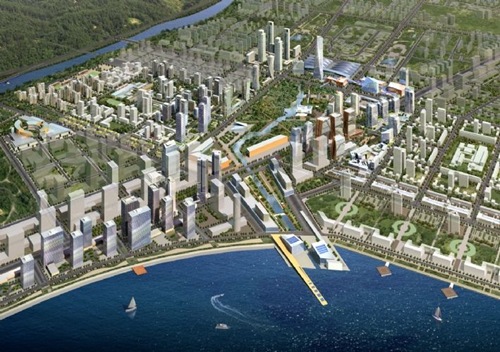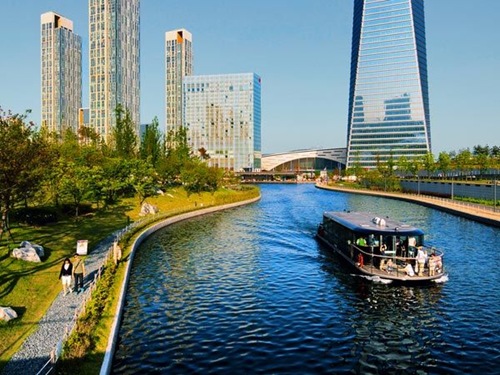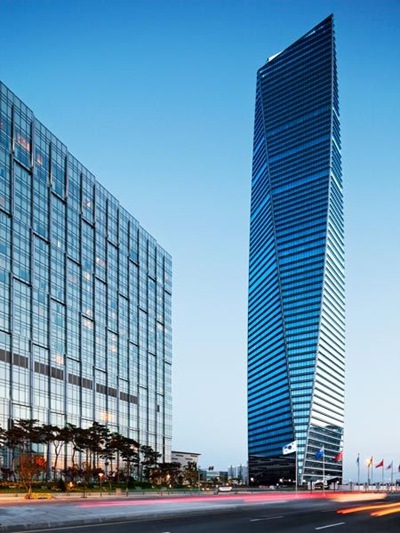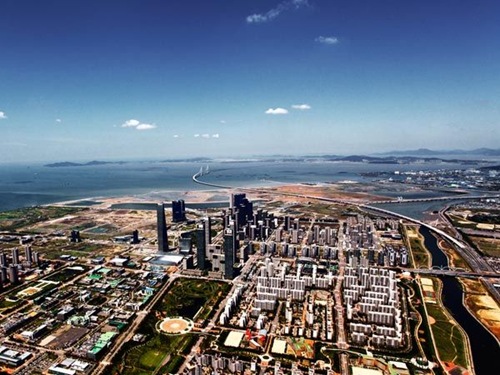
The City of Tomorrow Exists Today - in South Korea
By Rachel Z. Arndt, Popular Mechanics, 5 March 2013.
By Rachel Z. Arndt, Popular Mechanics, 5 March 2013.
Twenty miles west of 2000-year-old Seoul, South Korea, lies a brand-new city built on algorithms and LEED certifications. Already populated by more than 25,000 people and set to be completed by 2015, Songdo International Business District is a rare example of an entire city build from scratch.
Self-Sustaining Parkland
Songdo's 100-acre central green space requires no external water supply. Recycled-plastic cisterns holding rainwater during the wet season are tapped for dry-season irrigation. The plants in the park are all native to South Korea.
Saltwater Canal
The city's central waterway, plied by 12-passenger diesel water taxis, is a major public transportation thoroughfare. Turbines continuously pump water from the Yellow Sea into the canal. This system saves thousands of litres of potable water per day. Filling the canal with salt water prevents winter ice from forming, which would impede boat traffic.
Northeast Asia Trade Tower
The shape of Songdo's tallest building is dictated by safety as well as aesthetics. The architects wanted the skyscraper to lean dramatically toward the central park, so they built the structure with a bowed front and back to equally distribute the downward forces on the foundation. Planners also tested the building - and all the others in the city - through wind simulations. Using these data, they added load-bearing elements only on the sides of the buildings that face the strongest gusts, saving money.
Five Annoyances Songdo Residents Do Without
1. Bikes chained to light poles
Planners mandate that bike racks be placed on each block. The city-wide total is equal to 15 percent of the number of car parking spaces.
2. Parking traffic
Because 95 percent of parking is underground, there are fewer drivers crawling along streets looking for available spots.
3. The banality of sprawl
The city is most dense and the buildings are tallest at its centre. This gives the city what urban planners call a skyline identity.
4. Garbage trucks
Waste is removed via pneumatic tubes linked to all buildings and along streets and parks.
5. Long drives to the airport
Songdo's bridge to Incheon Airport cuts the 90-minute commute to just 15 minutes.




No comments:
Post a Comment
Please adhere to proper blog etiquette when posting your comments. This blog owner will exercise his absolution discretion in allowing or rejecting any comments that are deemed seditious, defamatory, libelous, racist, vulgar, insulting, and other remarks that exhibit similar characteristics. If you insist on using anonymous comments, please write your name or other IDs at the end of your message.